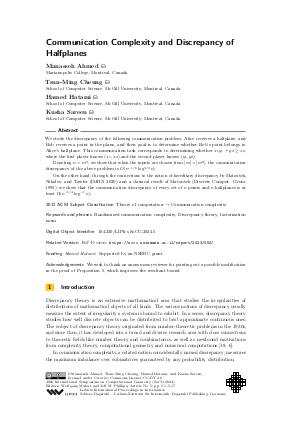LIPIcs.SoCG.2024.5.pdf
- Filesize: 0.83 MB
- 17 pages

 Creative Commons Attribution 4.0 International license
Creative Commons Attribution 4.0 International license


















Feedback for Dagstuhl Publishing